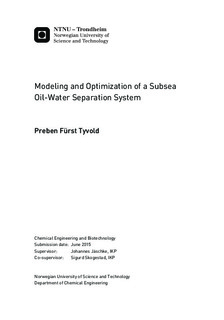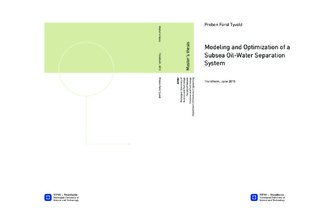| dc.description.abstract | Compact oil-water separators are essential for treatment of the production streams of oil fields at deep waters. The aim of this work has been to develop a model for a compact oil-water separation system for optimization and control purposes. For these regards, the model is required to be relatively simple in order to achieve low computational costs.
We have studied a system containing a gravity separator for the bulk separation of water and oil, and two inline swirl separators that are connected to it for further purification. One of the swirl separators is used to purify the water-rich product (oil-in-water emulsion) and the other one is used to purify the oil-rich product (water-in-oil emulsion). The separation system has been optimized for different inlet water cuts and flow rates. The optimization variables are the ratio between the product streams of each of the three separators.
The models for the horizontal gravity separator and two co-current, in-line swirl separators have been developed and implemented in MATLAB. The models are based on a characteristic droplet size; the separation rate is given by the average terminal velocity, which is determined by the density difference of the dispersed and the continuous phase and the frictional force given by Stokes' law. The swirl separators use static swirl elements to generate swirling flows that facilitate separation. They are modeled with an inner forced vortex and an outer free vortex, which determine the centrifugal force on the dispersed droplets. The model for the swirl separator with oil-in-water emulsion in the inlet flow is compared to experimental data available in the literature and shows good agreement at different operational conditions. | |

